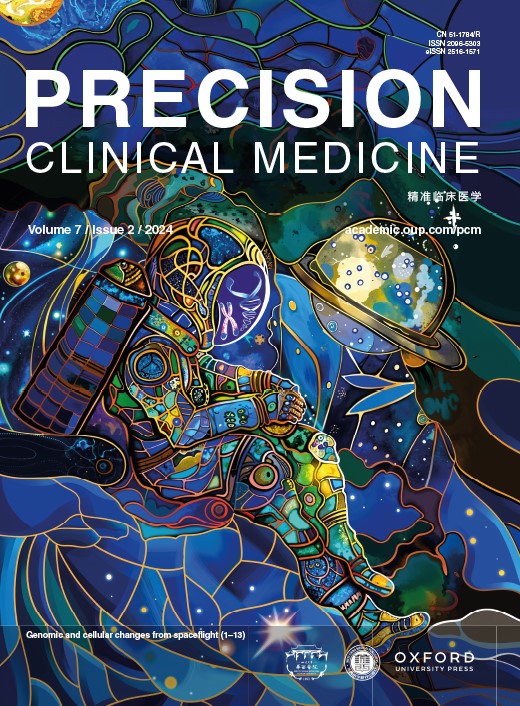COVID-19开启了疫苗接种和感染控制的新世纪,造福全人类
IF 5
4区 医学
Q1 MEDICINE, RESEARCH & EXPERIMENTAL
引用次数: 0
摘要
1796年,英国的爱德华·詹纳(Edward Jenner)发现挤牛奶的女工肤色美丽,没有天花疤痕留下的污点,于是开创了现代安全疫苗接种的先河。这是由于他们在局部水泡中暴露于“牛痘”,这似乎可以保护他们免受更严重且往往致命的“天花”的侵害。20世纪,第一个诺贝尔医学奖强调了免疫的重要性,该奖项授予了埃米尔·阿道夫·冯·白令,他认识到血液中抗体的治疗作用,1使用康复的人(或马)的血浆来保护和治疗白喉,并最终在1907年发明了白喉疫苗。第一批疫苗是简单制作的,是由活培养细菌的变性蛋白质提取物制成的,因此接种疫苗没有引起疾病的危险。白喉-百日咳-破伤风(DPT)疫苗很早就有了,而且是给婴儿接种的,这使得这三种可怕的儿童疾病在西方国家并不常见。我第一次接触疫苗是在6岁的时候(小学一年级),当时我的母亲和3岁的弟弟在西澳大利亚州卡尔古利的市政厅参加大规模脊髓灰质炎疫苗接种活动,接种索尔克疫苗。我记得疫苗装在一个50毫升的多次使用的瓶子里,估计每2毫升装25剂。大厅里一片混乱,人们排着队,还有许多哭泣的孩子。在闷热拥挤的大厅里,卫生状况并不理想,多用途针头只是在酒精中浸泡,以便在病人之间消毒,使用起来变得钝钝且不安全。但是,至少在12个月之后,Salk疫苗才能在澳大利亚使用,因为美国卡特实验室的早期批次之一被撤回。1955年,由培养的脊髓灰质炎病毒制成的病毒抗原没有充分消毒,导致美国实际发生250多例脊髓灰质炎病例。这使得FDA保持高度警惕,坚持更严格的生产和质量控制程序,随后对所有新疫苗进行大规模的1、2和3期测试。其理念是,由于疫苗是给健康人接种的,即使在预防脊髓灰质炎或最近的COVID-19等危险疾病时,百万分之一的严重副作用(或死亡)发生率也可能过高。1960年后,脊髓灰质炎减毒活疫苗取代了索尔克注射疫苗。在学校疫苗接种计划的保护下,我接受了一种新的形式,将一滴粉红色的疫苗放在方糖上,然后食用。新Sabin疫苗的成功之处在于它的简单性和口服形式。毕竟,小儿麻痹症是一种肠道病毒,我认为,如果学童在家中出现非常轻微的胃肠道疾病,家庭成员可能会感染这种活疫苗菌株。三价Sabin活疫苗株在极少数情况下会引起明显的脊髓灰质炎,因此,当实际的野生脊髓灰质炎株变得极其罕见时,疫苗株脊髓灰质炎变得相对更常见。因此,大多数脊髓灰质炎疫苗接种再次使用更新的Sabin二价疫苗模型,将疫苗引起的脊髓灰质炎病例减少到接近零1995年,我应莫里斯·希勒曼(Maurice Hilleman)博士的邀请前往费城,他开发了许多目前使用的常见疫苗,最著名的是麻疹、腮腺炎、风疹(MMR)疫苗。为了研制疫苗,他利用他受感染的女儿的非传统来源分离出腮腺炎病毒。那次访问使我看到了生产疫苗的许多可能性,从嵌合减毒病毒到鼻吸入,甚至是转基因香蕉等食品中的疫苗的“圣杯”。早在2005年获得诺贝尔奖(因幽门螺杆菌和消化性溃疡)之前,我就在泰国获得了玛希隆亲王医学奖。这是亚洲本文章由计算机程序翻译,如有差异,请以英文原文为准。
COVID-19 has triggered a new century of vaccination and infection control for the benefit of all mankind
Modern safe vaccinations were pioneered in 1796 by Edward Jenner in England, when he noticed that milkmaids had beautiful complexions, clear of the blemishes from smallpox scars. This was attributed to their exposure to ‘cowpox’ in localised blisters, which seemed to protect them from the more severe and often fatal ‘smallpox’. In the twentieth century, the importance of immunity was emphasised by the very first Nobel Prize in Medicine, awarded to Emil Adolf von Bering who recognised the therapeutic role of antibodies in blood,1 using plasma from a recovered human (or horse) to protect and treat diphtheria, and eventually inventing the diphtheria vaccine in 1907. The first vaccines were simply made, being denatured protein extracts of live cultured bacteria, so there was no danger of causing the disease from the vaccination. Diphtheria-Pertussis-Tetanus (DPT) vaccine has long been available and is given to infants, making these three dreaded diseases of children uncommon in Western countries. My first personal experience with vaccination was as a 6-year-old (school grade 1) with my mother and 3-yearold brother attending the town hall in Kalgoorlie, Western Australia, for a mass polio vaccination administering the Salk vaccine. I remember that the vaccine was in a 50 ml multiple use bottle containing an estimated 25 dosages of 2 ml. The hall was pandemonium, with lines of people and numerous crying children. Hygiene in the stuffy, packed hall was less than ideal, the multiuse needles simply being soaked in alcohol for sterilisation between patients, becoming blunt and unsafe for use. But there had been at least a 12-month delay before the Salk vaccine could be used in Australia, as one of the early batches from Cutter Labs USA was withdrawn. The virus antigen made from cultured polio virus had not been sterilised adequately in 1955, resulting in more than 250 cases of actual polio in the USA. This caused the FDA to go on high alert, insisting on more stringent manufacturing and quality control procedures, followed by large-scale phase 1, 2 and 3 testing for all new vaccines. The concept is that, because vaccines are given to healthy people, a one-in-a-million incidence of severe side effects (or death) may be too much, even when preventing a dangerous disease such as polio or more recently COVID-19. Attenuated live polio vaccine replaced the Salk injected vaccine after 1960. Under the umbrella of the school vaccination programme, I received the new format whereby a drop of the pink vaccine was placed on a sugar cube and then eaten. The success of the new Sabin vaccine was its simplicity and oral format. After all, polio is an enterovirus, and I suppose family members could be infected with the live vaccine strain if schoolchildren experienced a very mild gastrointestinal illness at home. The live vaccination trivalent Sabin strain could cause overt polio in very few cases so that, as the actual wild-strain polio became extremely rare, vaccinationstrain polio became relatively more common. For that reason, most polio vaccinations are once again using an updated Sabin bivalent vaccine model, reducing the cases of vaccine-caused polio to near zero.2 In 1995 I was invited to Philadelphia by Dr Maurice Hilleman, who had developed many of the common vaccines in use today, most notably the Measles Mumps Rubella (MMR) vaccine. He used the unconventional source of his infected daughter to isolate the mumps virus in order to develop the vaccine. That visit opened my eyes to the many possibilities for producing vaccines, from chimeric attenuated virus to nasal inhalations and even the ‘holy grail’ of vaccines, that is in food such as transgenic bananas. Long before receiving a Nobel Prize in 2005 (for Helicobacter and Peptic Ulcers), I was awarded the Prince Mahidol medical prize in Thailand. This is the Asia
求助全文
通过发布文献求助,成功后即可免费获取论文全文。
去求助
来源期刊

Precision Clinical Medicine
MEDICINE, RESEARCH & EXPERIMENTAL-
CiteScore
10.80
自引率
0.00%
发文量
26
审稿时长
5 weeks
期刊介绍:
Precision Clinical Medicine (PCM) is an international, peer-reviewed, open access journal that provides timely publication of original research articles, case reports, reviews, editorials, and perspectives across the spectrum of precision medicine. The journal's mission is to deliver new theories, methods, and evidence that enhance disease diagnosis, treatment, prevention, and prognosis, thereby establishing a vital communication platform for clinicians and researchers that has the potential to transform medical practice. PCM encompasses all facets of precision medicine, which involves personalized approaches to diagnosis, treatment, and prevention, tailored to individual patients or patient subgroups based on their unique genetic, phenotypic, or psychosocial profiles. The clinical conditions addressed by the journal include a wide range of areas such as cancer, infectious diseases, inherited diseases, complex diseases, and rare diseases.
 求助内容:
求助内容: 应助结果提醒方式:
应助结果提醒方式:


